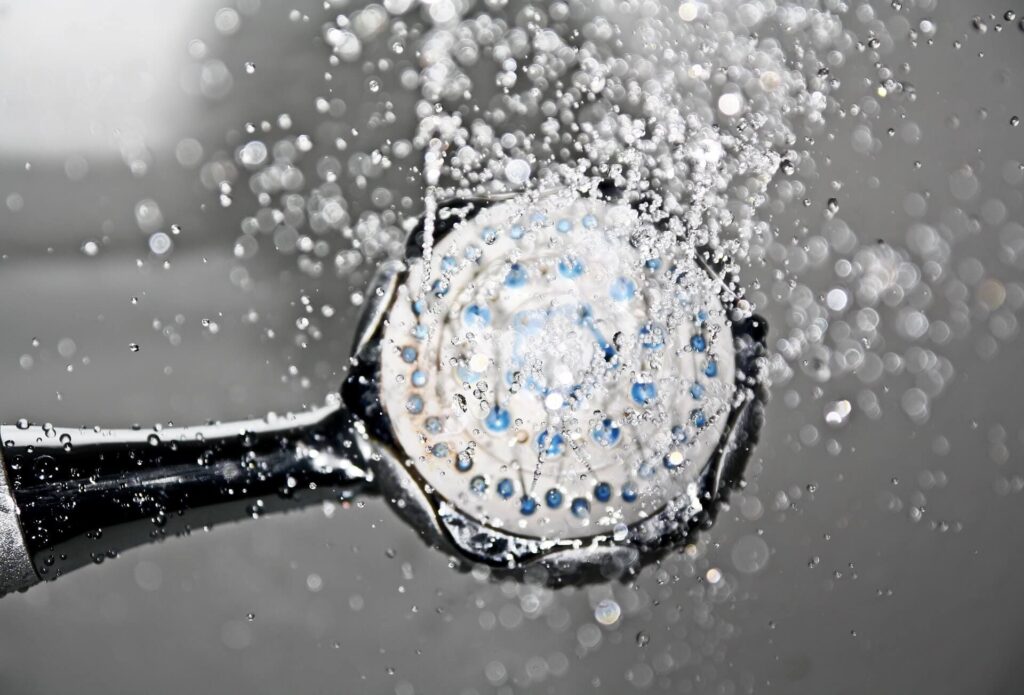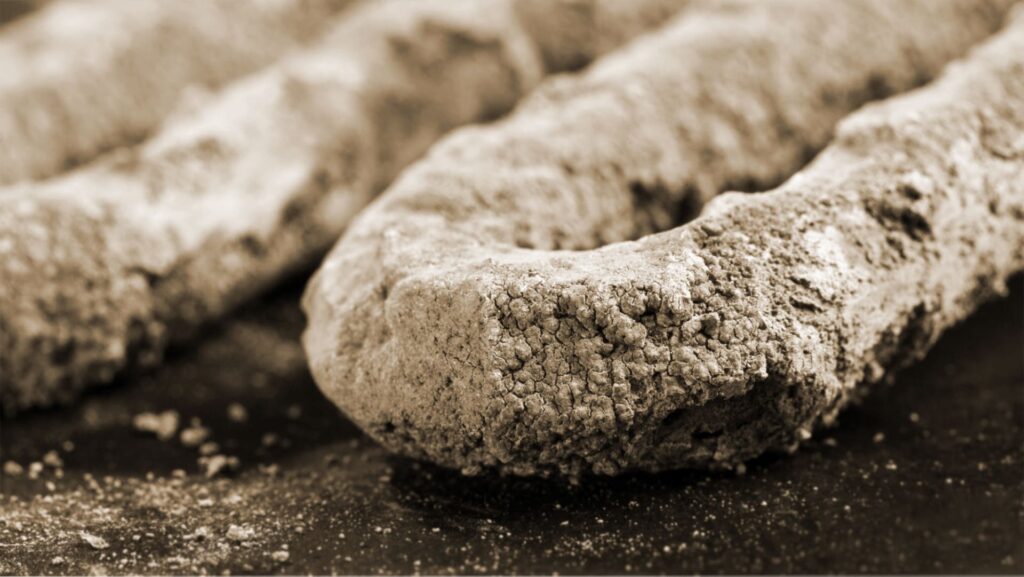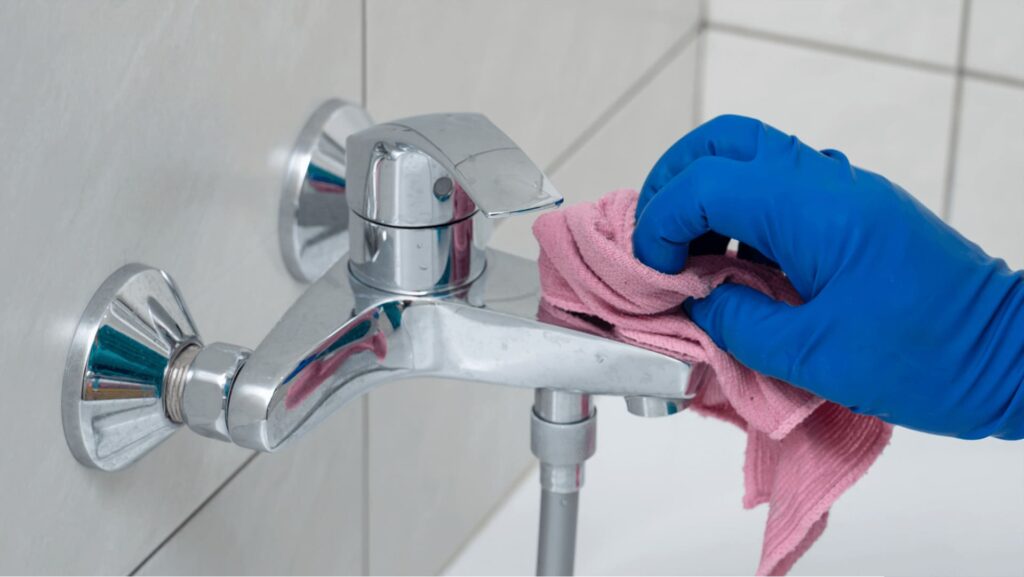
You hate that hard, milky white deposit all over your faucets and showers and inside plumbing pipes. Don’t you? In fact, we all do. It not only destroys the aesthetics of your plumbing fixtures but also affects the flow of water.
Limescale is a serious problem But the question is: what causes limescale buildups? How can you remove it using simple techniques? What is limescale anyway? Do you need a professional to clean your fixture or can you do it yourself? Let’s answer all of these questions in this post.
How to remove limescale with ease
How to clean ceramic or glass surfaces
Remove limescale off your shower heads
How to remove limescale from pipes
Remove hard water stains from a sink
Remove limescale from the kettle by following these steps
How to clean granite stains caused by hard water
How to get rid of limescale from toilets
Getting rid of stains on laminate countertops due to hard water
How to remove limescale from taps
Learn how to remove hard water stains from a bathtub
How to remove limescale from a shower door
Here are some tips on how to get rid of hard water stains on aquariums
Here is a short guide to help you prevent hard water stains and limescale build-up
Removing limescale permanently
What is limescale?
If you know what elements get together to form a limescale buildup, it will become easier for you to figure out a solution. Limescale is a white substance composed mainly of calcium carbonate. It often builds up inside pipework, boilers, taps, washing machines, coffee machines, and kettles. It is often found inside old fixtures where hard water has flowed.
You’re more likely to encounter this problem if you live in a city or state that has hard water. In other words, the water you use for cleaning and washing contains a high number of dissolved mineral content such as calcium and magnesium. While hard water isn’t a health concern, it seriously impairs the operations of your heating and plumbing components.
In fact, even people who live in “soft water” areas, such as Scotland, Northern Ireland, Cumbria, Devon and Cornwall, can develop problems over time since soft water contains calcium and magnesium.

How to remove limescale with ease
Your toilet bowl and other areas of your home will accumulate limescale over time, so you will have to remove it. If you want bright, shiny surfaces but don’t enjoy cleaning, a water softener can eliminate water stains and mineral deposits altogether.
There’s no permanent solution when it comes to removing limescale buildups. Rather it’s an ongoing battle unless you install a water softener. A water softener can be added to your water supply if limescale build-up forms in a hard water environment. However, here is how you can use a few inexpensive products (such a limescale remover) to remove calcium deposits on your faucets, surfaces, showerheads, bathrooms, and toilets quickly and easily without using any harsh chemicals:
- Gather household items you need for cleaning
Deposits left behind by hard water can be hard to remove. However, you can get it removed with the effective method of using the following easily available household items:
- Lemon
- White vinegar
- Baking soda
- Plastic bag
- Gloves and eyewear (lemon contains citric acid, for example)
- Toothbrush or sponge
- Rubber bands
- Cotton wool/towel
- Spray bottle
The list might sound long but these items can easily be found in almost every household. We’re sure you do have these items in your house. Lemon juice and white vinegar are two amazing products to deal with most of your limescale-related problems.
The goal here is to avoid those chemical-based limescale cleaners. Only a professional should use these products to clean or unblock fixtures. As a household, you only need lemon, vinegar or a mix of these to break down limescale. White vinegar dissolves the limescale clogging up your fixtures. The rest of the items we just mentioned will help you along the process.
- Wear protective equipment
We’re not using any harsh chemicals or fumes to get rid of limescale. However, you should be wearing protective glasses and gloves during the cleaning process. Although it’s safe to use vinegar or lemon, you must take some precautions when cleaning with vinegar. Protective glasses will reduce the chances of vinegar getting in your eyes. Besides, make sure children aren’t present in areas where you’re about to perform the cleaning.
How to clean ceramic or glass surfaces
Before you remove limescale from shower heads or faucets, do some practice on ceramic or glass surfaces. In the kitchen and bathroom, hard water can leave ugly-looking spots on surfaces. Sinks, tubs, doors, and glass walls are most likely to be affected by limescale stains. These stains don’t create any problem but they look bad. So, here is what you need to do:
- Fill a spray bottle with half vinegar and half water.
- Mix the solution well and spray the area you want to clean.
- Let it soak in for a few minutes.
- Wipe the surface clean with a soft piece of cloth.
- Repeat the process if you still find any stains or streaks remaining.
Remove limescale off your shower heads
Limescale deposits sometimes clog a shower head making it harder for water to flow through. If you feel like you don’t have a better shower pressure, it’s time to get it fixed and cleaned. This time you only need vinegar to remove the limescale. Follow these steps:
- Fill a small plastic bag half full with vinegar and tie it around shower head with a rubber band.
- Leave the bag in place and let the vinegar do its job for a few hours.
- Remove the bag and clean the shower head with a soft sponge or toothbrush.
- You can use a toothpick or needle to clear away stuck grim inside shower holes.
- Run the shower for a couple of minutes to get rid of the remaining limescale particles.
Here we go! You’ll feel a big difference in shower pressure. Not to mention, it will start shining again. If possible, you can also remove the shower head and carry out the same process.
You can follow the same process to clean faucets and other components. For example, you can melt down limescale around a faucet with vinegar and then clean it with a toothbrush or cloth.

How to remove limescale from pipes
Most of the limescale deposits in your house are not visible. You can’t see it and remove it with your hands. But still, you can do something about it. For instance, it’s possible to get rid of buildups in your pipes. Again, you don’t have to use a commercial cleaning product for this purpose. All you need to do is get eight litres of vinegar and a cup of baking soda to clean one drain. Now follow these steps:
- Drain your home’s plumbing system.
- Put the cup of baking soda into a drain.
- Slowly pour in the vinegar and let it be there for a few hours.
- Now pour boiling water down the drain forcefully.
Remove hard water stains from a sink
The surfaces of both stainless steel and porcelain sinks will feel rough due to hard water stains. A gentle method of removing limescale is recommended for porcelain sinks in particular since abrasive cleaners may leave marks on them.
How to clean a porcelain sink of limescale
- Clean any surface dirt or grease with warm water and wash up liquid
- In a blender, combine one part white vinegar with two parts bicarbonate of soda to make a paste
- Spread this paste on any stains caused by hard water with your fingers
- Leave it on for five minutes to soften the limescale patches
- Use a soft sponge to scrub the areas
Remove any remaining paste by rinsing the sink
- Clean the taps and dry the sink.
- How to clean a stainless steel sink of limescale
- Make a solution of water and vinegar (five parts water, one part vinegar)
- Carefully wipe away each stain left by hard water with a soft cloth or sponge
- Remove any remaining solution by thoroughly rinsing the sink.
- Rinse the taps and dry the sink.
Remove limescale from the kettle by following these steps
To remove problem limescale deposits from your kettle, you can purchase kettle-cleaning kits, but you can also use natural cleaning methods.
- Put equal amounts of white vinegar (or lemon juice) and water in your kettle
- Soak for an hour, then strain.
- Heat the water in the kettle.
- Empty the mixture, then wash the kettle thoroughly
- Dip a cloth into the vinegar-water mixture and wipe down the kettle’s outside.
How to clean granite stains caused by hard water
Kitchen countertops made of granite are well known for being durable and beautiful. Those who live in hard water areas can encounter limescale deposits on darker granite. Since granite countertops and sinks are often sealed to prevent scratches, removing hard water stains can be tricky.
- With a nonabrasive scrub pad, warm water, and dishwashing liquid, clean your granite sink
- Ensure there are no limescale deposits in the sink after cleaning
- Then use another paste made from water (1 part) to clean your granite sink. Combine three parts of bicarbonate of soda with one part of water
- After leaving this paste on stubborn stains for a few hours, rinse it thoroughly.
How to get rid of limescale from toilets
Limescale deposits in toilets are very difficult, no matter how well or how often you scrub. It is often difficult to clean the area below the water in the toilet bowl where hard water can leave stains. If you are patient, limescale can be removed from a toilet, but this should be done just before you leave because you won’t be able to use the toilet for a few hours.
- Make sure you wear gloves
- Pour out the water from the toilet. With a toilet brush, you can scoop it out or push it around the bend
- Make sure the limescale deposits are covered by undiluted white vinegar
- Ideally, leave it for several hours
- Use the toilet brush to scrub the bowl, then flush.
Getting rid of stains on laminate countertops due to hard water
However, laminate countertops are susceptible to hard water stains, which will be more noticeable if your kitchen theme is dark. We recommend using a gentler natural approach to cleaning laminate countertops rather than chemical cleaners or harsh cloths.
- You can remove dirt, grease, and stains from laminate at home using warm water, dishwashing liquid, and a soft sponge
- Mix three parts of bicarbonate of soda and one part of water to make a paste
- Spread the paste over each stain
- Allow it to dry for thirty minutes
- Afterwards, clean and dry the laminate countertop thoroughly.
How to remove limescale from taps
However, you can remove limescale from the outside of your taps, leaving them clean, even if you don’t have a water softener. It is sometimes easier to clean taps with a paste than with a liquid solution because they are a bit fiddly.
Learn how to remove limescale from stainless steel taps
- Mix two parts bicarbonate of soda and one part white vinegar to make a thick paste
- Cover limescale deposits with the paste
- Let’s stay for 30 minutes
- Then rinse and dry.
Learn how to remove limescale from copper or brass taps
- Combine two parts bicarbonate of soda with one part of white vinegar to form a paste
- Use this paste to remove stains caused by hard water
- Wait 30 minutes after applying
- Remove with water and dry.
Learn how to remove limescale from chrome taps
- You need to be gentle when cleaning chrome
- Rub the stained area gently with a damp cloth and lemon juice
- In case this doesn’t work, make bicarbonate of soda paste and let it stay for a couple of hours on the surface
- You might find that an old toothbrush comes in handy when getting into those confined spaces.
Learn how to remove hard water stains from a bathtub
We often rest in the bathtub, but hard water stains can make it difficult to relax in a dirty bath. Limescale does not need to be removed from a bath because it can be removed.
- Add white vinegar and bicarbonate of soda in equal parts to make a thick paste
- Clean hard water stains with this paste
- Let it sit for some time
- Rinse it and repeat as needed
- You may want to leave the paste on overnight for harder limescale marks.
How to remove limescale from a shower door
- Combine equal parts white vinegar and water
- The solution can be squirted onto the shower door using a pump-action bottle
- After 10 minutes, wipe the solution away
- If any stubborn stains remain, repeat the process.
Here are some tips on how to get rid of hard water stains on aquariums
Hard water stains ruin the appearance of any aquarium, no matter how beautiful your fish are. It is vital that you resist the temptation to use cleaning products on your fish since these products can be deadly. Using white vinegar instead is much safer.
- Get the fish out of the aquarium
- Pour out the water
- Place the tank on a towel to avoid damaging the surrounding area
- Spray white vinegar on any limescale deposits
- Wait 10-20 minutes after applying vinegar
- Use a soft cloth to scrub the area
- Any hard water deposits on a glass tank can be scraped off using a razor blade.
Here is a short guide to help you prevent hard water stains and limescale build-up
It is important to take preventative measures when removing limescale from your plumbing system. Even though hard water cannot be stopped from entering your home, there are a few effective steps you can take to prevent the formation of hard water stains.
- Avoid using limescale prevention products near water sources
- Make it a habit to wipe the shower doors with a dry cloth and a wiper blade to prevent limescale buildup
- After using the sinks and taps, make sure they are completely dry
- Regularly remove limescale to prevent the buildup of stains
- Buy a water softener that’s professionally installed.
- Vinegar diluted with water works well for removing scale. To prevent buildup, regularly clean fixtures with a 50/50 mix of white vinegar and water.
- Dishwashers and other appliances can be rinsed with vinegar (always check with the manufacturer).
Is limescale bad for you?
There’s no scientific evidence that limescale is harmful to your health. However, it is certainly not good for your appliances and plumbing systems. Calcium buildups can lead to blockages that ultimately prevent appliances from working properly. For example, buildups in pipes can make your washing machine overwork due to low water pressure. Therefore, you must take some time and remove limescale from pipes.
Removing limescale permanently
You might be wondering whether or not it is possible to get rid of limescale once and for all. As we mentioned earlier, the prime cause of limescale deposits is hard water running through your pipes. You can’t permanently get rid of limescale unless you install a system to treat water before it reaches your home appliances. However, regular cleaning can help you prevent limescale deposits.
Don’t hesitate to call a professional drainage service
It’s not always possible to use DIY techniques to remove old, stubborn limescale from your drains and pipes. This is where you should consider calling a drainage company rather than spending your precious time fighting with limescale or any other kind of drain blockage.
Professional drain cleaning companies use special equipment to conduct drain surveys and remove blockages efficiently. Some companies offer 24/7 emergency services to help households with their immediate drain unblocking needs.
About Flow Drains
Flow Drains is one of the most trusted drain unblocking and maintenance companies. We use state-of-the-art equipment to provide highly efficient services to both residential and commercial clients in the UK. If you need a professional to remove limescale from your drains, feel free to contact us!